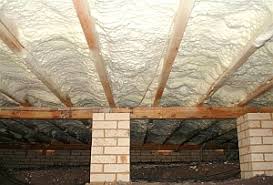Underfloor Insulation
Flower Construction

Insulation
Underfloor insulation plays a vital role in improving energy efficiency, comfort, and durability in buildings, particularly in climates like those in the Middle East, where extreme temperature fluctuations are common. Flower Construction, known for its modern and sustainable approach, can significantly benefit from the use of underfloor insulation in its projects, both in residential and commercial settings.
This guide will discuss the importance of underfloor insulation, the different types of insulation materials available, how they can be integrated into Flower Construction’s building processes, and the long-term benefits of investing in this technology.

The Importance of Underfloor Insulation
Underfloor insulation is designed to reduce heat transfer between the ground and the building, ensuring a comfortable indoor environment by retaining heat in winter and preventing overheating in summer. It also reduces energy consumption, as less heating or cooling is required to maintain indoor temperatures. For Flower Construction, integrating underfloor insulation into new builds provides a competitive advantage, aligning with global trends toward sustainable construction and reducing the environmental impact of buildings.

Benefits of Underfloor Insulation
Energy Efficiency
Proper insulation can reduce heating and cooling costs by 20-30%, making homes and buildings more energy-efficient.
Comfort
Insulation helps maintain consistent indoor temperatures, improving comfort levels for occupants.
Moisture Control
By preventing condensation and dampness from entering through the floor, underfloor insulation also helps in controlling humidity levels.
Acoustic Insulation
Insulating floors can reduce noise transfer between different rooms or levels of a building.
Installation Methods for Flower Construction Projects
The method of installation is just as important as the material chosen.
Flower Construction’s approach to underfloor insulation must take into account the structure of the building, the type of flooring, and the specific needs of each project. Here are the most common methods of installation

Insulating Concrete Slabs
In projects where concrete slabs are used for flooring, rigid foam boards are often laid underneath the slab. This provides a continuous layer of insulation between the building and the ground, reducing heat transfer and increasing energy efficiency.

Suspended Timber Floors
For suspended timber floors, insulation is installed between the joists. Fiberglass, rigid foam boards, or spray foam insulation can be used, depending on the specific needs of the project.

Radiant Floor Heating with Insulation
For projects where radiant floor heating systems are planned, underfloor insulation becomes even more critical. Without proper insulation, heat can escape into the ground, reducing the efficiency of the system.
Climate Considerations
Flower Construction
Given the diverse climate conditions in the Middle East, Flower Construction projects must take into account both hot and cold weather scenarios. In hotter climates, reflective insulation and moisture control are key concerns, while in colder regions, thermal resistance becomes the priority. By selecting the right type of insulation for each project, Flower Construction can optimize energy efficiency and comfort levels in a variety of settings.
Hot Climates
Reducing heat gain, preventing moisture buildup.
Recommended Insulation: Reflective foil insulation, rigid foam boards.
Cold Climates
Preventing heat loss, maintaining thermal comfort.
Recommended Insulation: Fiberglass, rigid foam, spray foam insulation.
